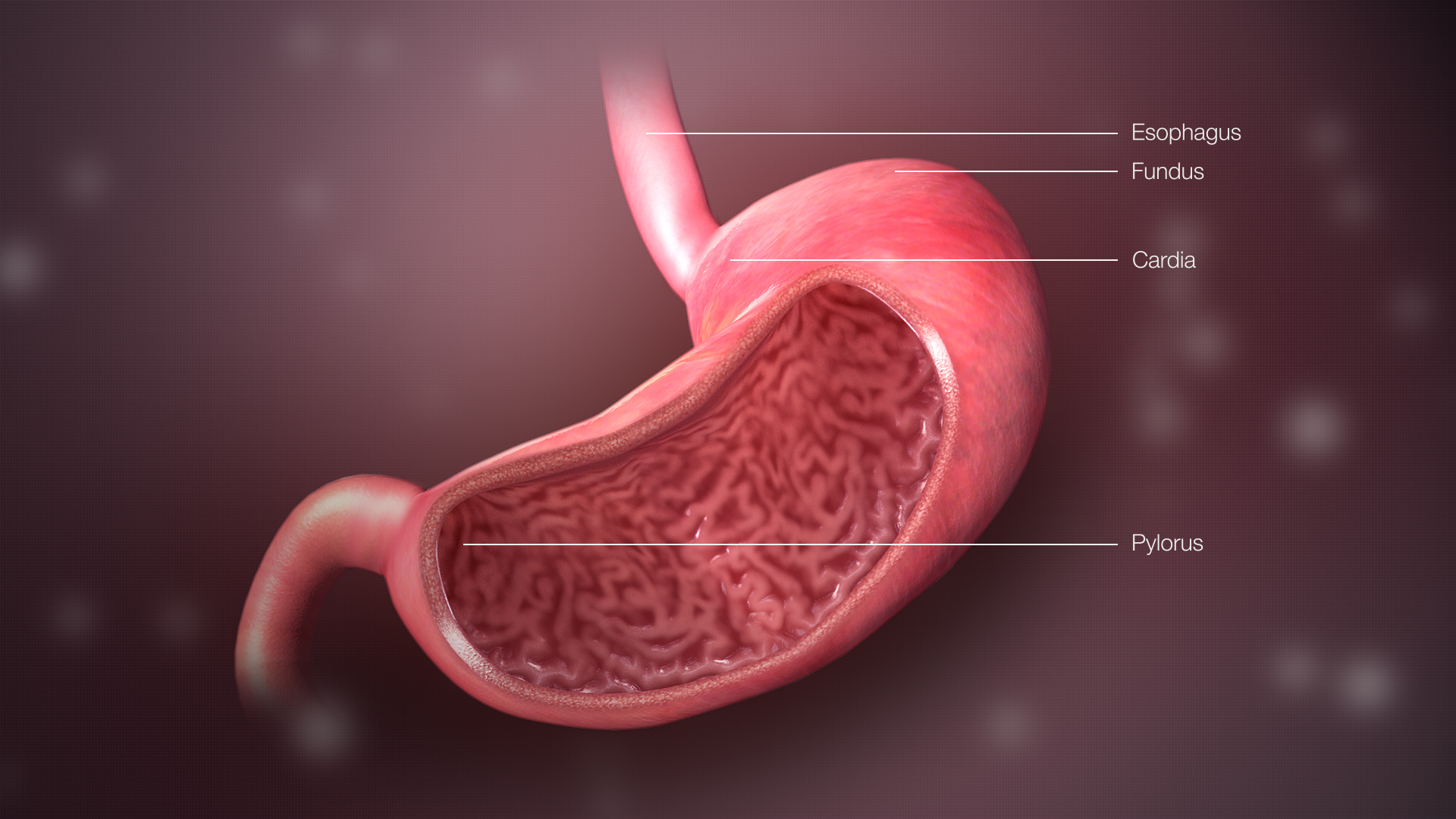
J-shaped muscular bag that churns the food is-
A. Small intestine
B. Stomach
C. Large intestine
D. Oesophagus
Answer
557.4k+ views
Hint: The food that we eat provides us the energy to perform all the body functions by undergoing the process of digestion, which is carried out by our digestive system using some mechanical and biochemical methods. The human digestive system consists of the alimentary canal and the digestive glands. The alimentary canal begins from the mouth and ends with the anus.
Complete answer: The alimentary canal has to mouth and oral cavity at the start followed by pharynx which is common to both food and wind. The oesophagus is the food pipe. The food pipe opens into a J-shaped bag called stomach, that stores the food for several hours through a sphincter called the gastro-esophageal sphincter. The stomach is located in the upper left side of the abdominal cavity. The wall of the stomach has four layers- serosa, muscularis, submucosa, and mucosa, the muscularis layer has oblique muscles in addition to longitudinal and circular muscles.
The stomach is divided into four major parts-
i. Cardiac- The oesophagus opens into this part.
ii. Fundus- The upper portion of the stomach.
iii. Body- This is the main central region.
iv. Pyloric- This is the part that opens into the first section of the small intestine.

The stomach opens into the small intestine through the pyloric sphincter. The small intestine is divided into three parts, duodenum which is C-shaped, a long coiled part jejunum, in the middle, and highly coiled ileum. The pyloric sphincter guards the opening of the stomach into the duodenum. The last part of the small intestine, the ileum opens into the large intestine which is further divided into three parts- caecum, colon, and rectum.
Here the correct option is option (B).
Note: The stomach stores the food for 4-5 hours and then passes it to the small intestine for further digestion procedures. While being in the stomach the food gets mixed with the gastric juices that are acidic by the churning movements of the muscles of the stomach walls and is called chyme. Some of the drugs and alcohol are absorbed in the stomach. Initial digestion of proteins takes place here in the stomach.
Complete answer: The alimentary canal has to mouth and oral cavity at the start followed by pharynx which is common to both food and wind. The oesophagus is the food pipe. The food pipe opens into a J-shaped bag called stomach, that stores the food for several hours through a sphincter called the gastro-esophageal sphincter. The stomach is located in the upper left side of the abdominal cavity. The wall of the stomach has four layers- serosa, muscularis, submucosa, and mucosa, the muscularis layer has oblique muscles in addition to longitudinal and circular muscles.
The stomach is divided into four major parts-
i. Cardiac- The oesophagus opens into this part.
ii. Fundus- The upper portion of the stomach.
iii. Body- This is the main central region.
iv. Pyloric- This is the part that opens into the first section of the small intestine.

The stomach opens into the small intestine through the pyloric sphincter. The small intestine is divided into three parts, duodenum which is C-shaped, a long coiled part jejunum, in the middle, and highly coiled ileum. The pyloric sphincter guards the opening of the stomach into the duodenum. The last part of the small intestine, the ileum opens into the large intestine which is further divided into three parts- caecum, colon, and rectum.
Here the correct option is option (B).
Note: The stomach stores the food for 4-5 hours and then passes it to the small intestine for further digestion procedures. While being in the stomach the food gets mixed with the gastric juices that are acidic by the churning movements of the muscles of the stomach walls and is called chyme. Some of the drugs and alcohol are absorbed in the stomach. Initial digestion of proteins takes place here in the stomach.
Recently Updated Pages
The number of solutions in x in 02pi for which sqrt class 12 maths CBSE

Write any two methods of preparation of phenol Give class 12 chemistry CBSE

Differentiate between action potential and resting class 12 biology CBSE

Two plane mirrors arranged at right angles to each class 12 physics CBSE

Which of the following molecules is are chiral A I class 12 chemistry CBSE

Name different types of neurons and give one function class 12 biology CBSE

Trending doubts
One Metric ton is equal to kg A 10000 B 1000 C 100 class 11 physics CBSE

What is 1s 2s 2p 3s 3p class 11 chemistry CBSE

Discuss the various forms of bacteria class 11 biology CBSE

State the laws of reflection of light

Explain zero factorial class 11 maths CBSE

An example of chemosynthetic bacteria is A E coli B class 11 biology CBSE




